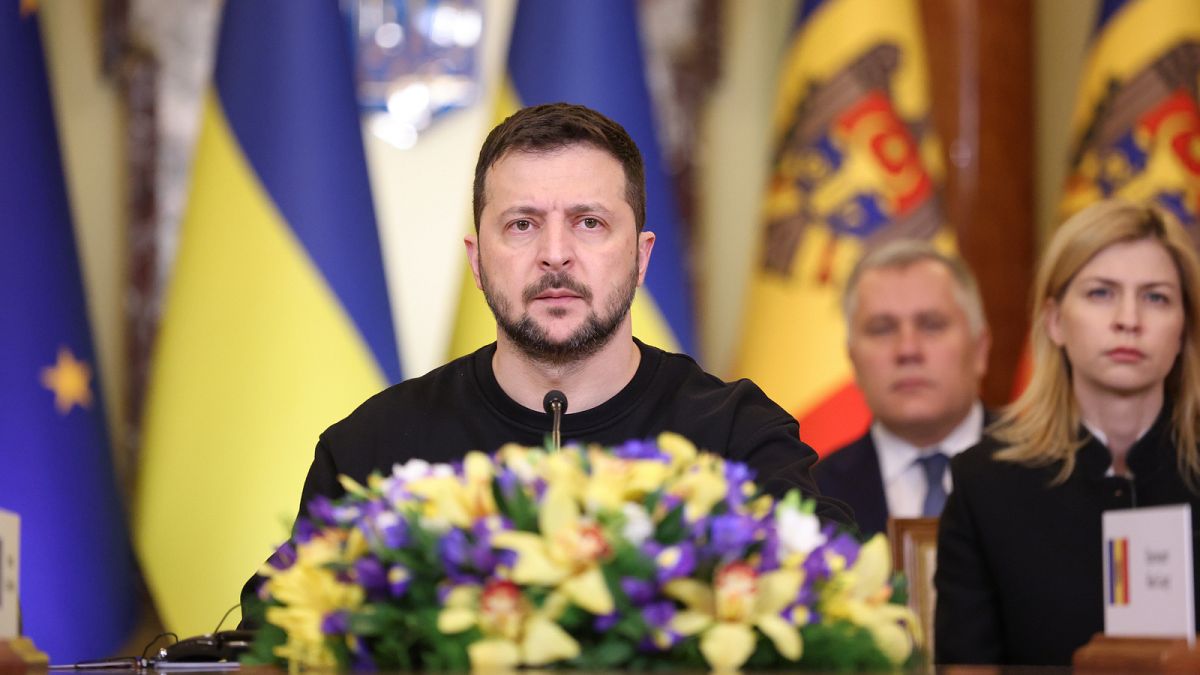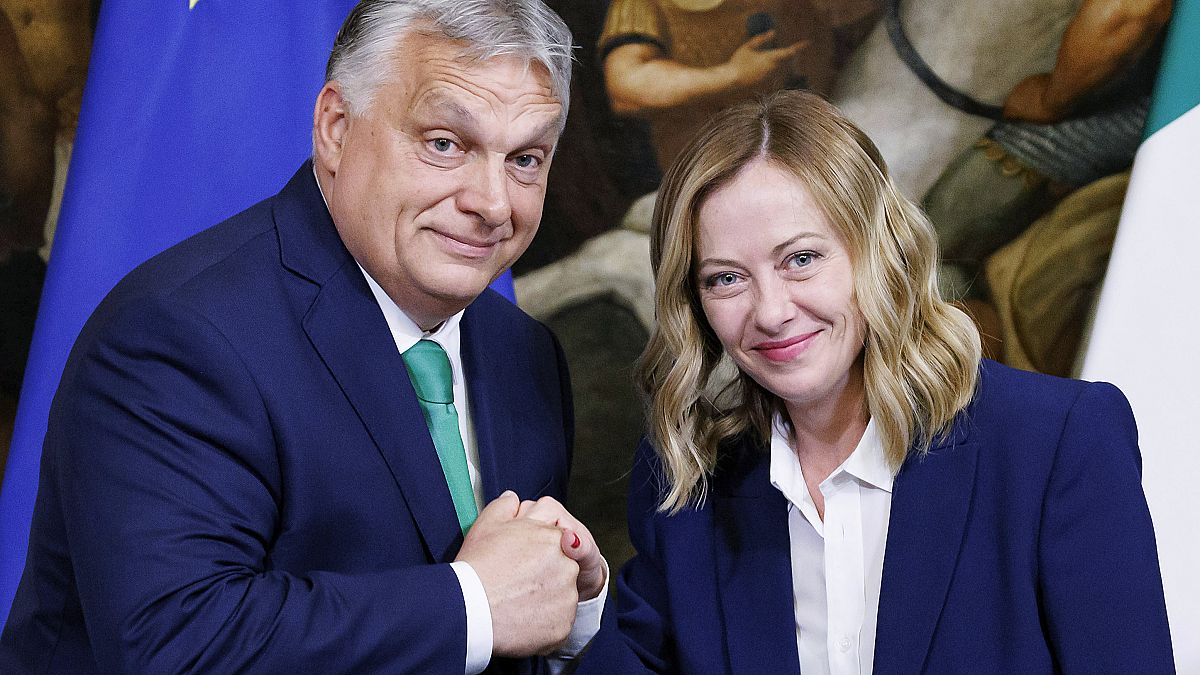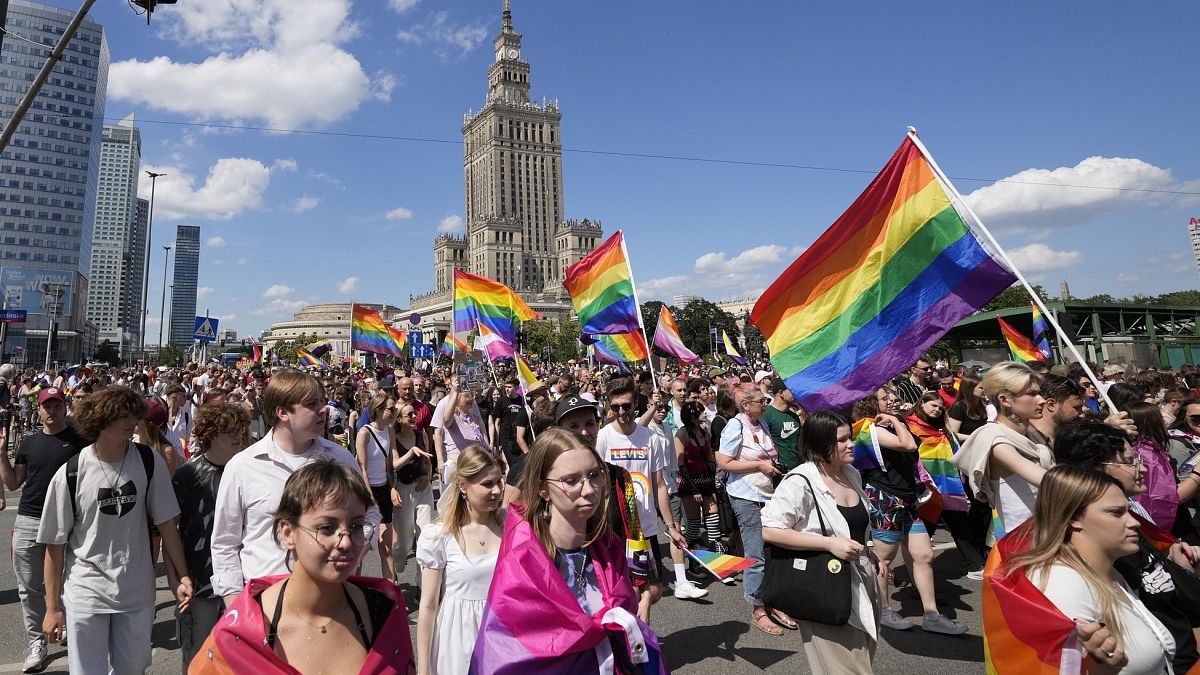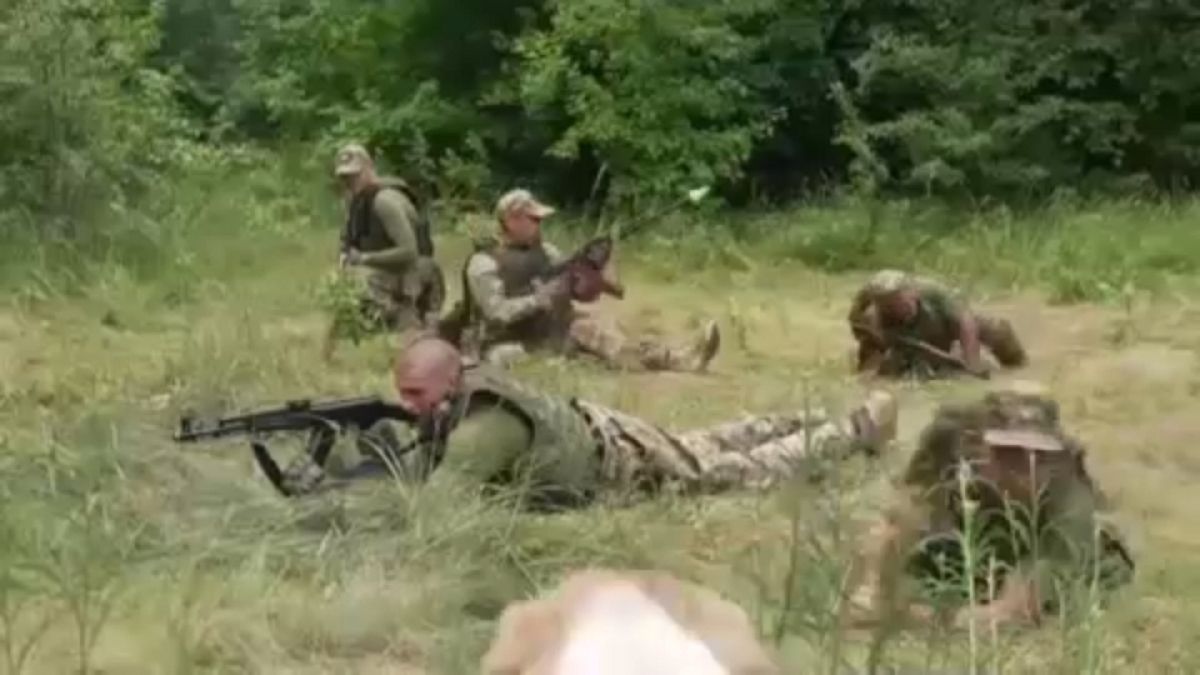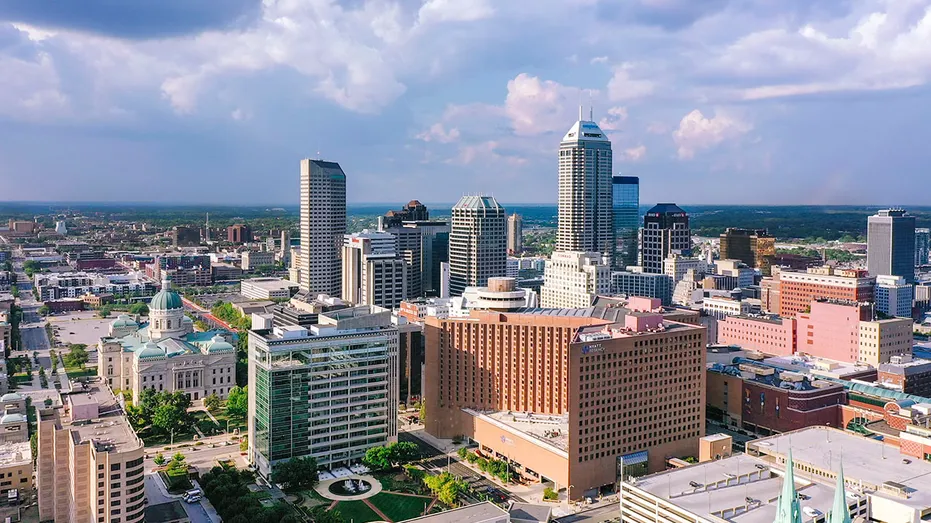World
Explained: Why truckers are blockading the EU’s border with Ukraine
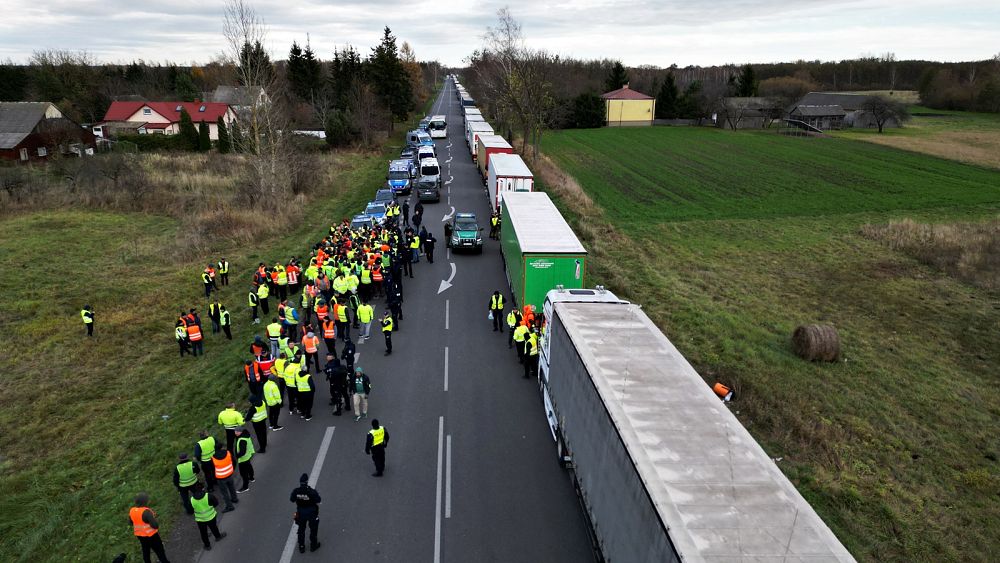
Polish truck drivers have spent nearly a month blockading different crossing points along the border with Ukraine. Last Friday, Slovak drivers joined the protest, turning the dispute into an all-out European crisis.
The around-the-clock restrictions have left thousands of Ukrainian drivers trapped in Poland, waiting for days on end to make it to the other side. Local media speak about queues that stretch more than 30 kilometres into Polish territory.
The harsh conditions in the area, including sub-zero temperatures, scarce food supplies and a lack of sanitary services, have raised serious security concerns, with reports of two Ukrainian drivers having died of natural causes while lingering inside their vehicles. (Poland says only one has died so far.)
Officials in Kyiv have described the situation as “catastrophic” and even touted an emergency plan to evacuate those who have been left stranded. The Federation of Employers of Ukraine estimates the national economy has lost at least €400 million.
Meanwhile in Brussels, the European Commission has sent Warsaw a message of strong disapproval and threatened to launch legal action if EU rules are not properly applied.
Here’s all you need to know to understand the truckers’ protests.
Why are truckers so angry?
The protest stems from a question of market competition.
As part of the European Union’s multi-faceted support for Ukraine, the bloc agreed to exempt Ukraine’s road freight carriers from carrying the permits that are traditionally required for non-EU haulers. Driving licences and certificates of professional competence issued by one side were automatically recognised as valid by the other.
The measure was introduced in June last year to boost the so-called “solidarity lanes,” which are meant to help Ukraine sustain its national economy and trading relations in the face of the Russian aggression. The partial occupation of Russian troops in Eastern Ukraine has deprived the country of access to the Black Sea, its main route for exports.
According to the European Commission, the “solidarity lanes” have allowed Ukraine to export over 60 million tonnes of foodstuffs, such as grain and oilseeds, between March 2022 and November 2023, in addition to 48 million tonnes of non-agricultural goods.
But Polish truckers are not pleased. They argue that Ukrainian drivers have been given excessive leeway and are taking advantage of the new rules to cover transport routes between member states that do not involve Ukraine.
Because Ukrainian carriers offer lower prices for their services and are not bound by EU standards, Polish truckers, who have for years enjoyed a leading position in Europe’s road transport sector, feel the situation amounts to unfair competition and demand the immediate re-imposition of the obligation to carry permits.
They also want empty trucks returning from Ukraine to be excluded from eCherha, an electronic queuing system set up by Kyiv, which protesters say creates excessive waiting times and exposes companies to economic losses.
Slovak drives share the same arguments and want to bring back pre-war rules.
What’s the scope of the protests?
The protests began on 6 November and have gradually extended to four checkpoints along the Poland-Ukraine border: Dorohusk-Yahodyn, Hrebenne-Rava-Ruska, Korczowa-Krakovets and, since last week, Medyka-Shehyni.
In total, the country has eight crossing points with Ukraine for road freight transport.
Protesters have promised to allow passage to vehicles carrying humanitarian aid and military supplies into the war-torn nation, but Kyiv says this promise is not being fulfilled.
Meanwhile, Slovak drivers have blocked the Vysne Nemecke-Uzhhorod checkpoint, Slovakia’s busiest border gate with Ukraine.
Is this related to the dispute over Ukrainian grain?
Strictly speaking, it is not. The ongoing protests relate to the competition posed by Ukrainian truckers, who are now able to service European clients with greater ease.
However, the blockade does share a link with the dispute over grain. As a response to Russia’s invasion, the EU lifted the tariffs on Ukrainian agricultural products, which were exported out of the country through the “solidarity lanes.” The abolition of duties led to a glut of low-cost Ukrainian grain across the European market, in particular in five peripherical member states: Poland, Hungary, Slovakia, Romania and Bulgaria.
Poland, facing the anger of farmers, reacted by imposing a unilateral ban that forbids Ukrainian cereals from being sold or stored inside the country. The prohibition was designed and established by the government as a policy measure.
The protesting truckers are a grassroots movement, without direct instigation from the state. Warsaw has, however, expressed solidarity with the affected drivers, supported the reasoning behind their claims and urged Brussels to re-establish transport permits.
Figures released by Poland’s Ministry of Infrastructure serve to underscore the dissatisfaction of protesters: in 2021, the year before Russia launched the war, Polish truckers had a 38% market share against 62% of their Ukrainian competitors. At the end of October, the numbers turned to 8% and 92%, respectively.
What’s Brussels saying?
Adina Vălean, the European Commissioner for transport, has described the situation as “absolutely unacceptable” and called for a swift resolution.
“While I support the right of people to protest, the entire EU – not to mention Ukraine, a country currently at war – cannot be taken hostage by blocking our external borders. It’s as simple as that,” Vălean said last week.
Vălean berated the Polish government for not doing its part to ease the conflict and said the Commission could open an infringement procedure to ensure EU law is respected.
“There is no good faith in finding a solution. This is my evaluation today,” Vălean said. “There is a nearly complete lack of involvement of Polish authorities.”
“I’m saying that because the Polish authorities are the ones that are supposed to enforce the law at that border,” she added.
Could there be a solution?
Talks are ongoing between the different parties but no roadmap for a lasting solution has yet emerged. Over the weekend, Poland and Ukraine struck a targeted deal to enable the movement of empty trucks by opening the Dołhobyczów-Uhryniv checkpoint and creating separate slots at the Dorohusk-Yahodyn and Korczowa-Krakovets crossings.
But the Polish government, which is in the midst of a power transition after eight years of hard-right government under the Law and Justice (PiS) party, has also announced stricter truck inspections along the border “at the request of Polish carriers” and called for an urgent review of the EU-Ukraine road transport agreement.
The European Commission is playing the role of facilitator and has suggested a list of “technical measures” that can be introduced to ease the tensions. But Brussels has made it clear that the abolition of transport permits, which has become the main source of uneasiness, would not be touched because it derives from an international agreement signed with Ukraine and rubberstamped by member states.
The Commission, as was the case during the grain controversy, is opposed to making any significant alterations to the many ways in which the bloc is supporting Ukraine.
Meanwhile, Polish protesters have said the blockade could last until early January if their demands are not satisfied.

World
Maps: 7.2-Magnitude Earthquake Shakes Peru
Note: Map shows the area with a shake intensity of 4 or greater, which U.S.G.S. defines as “light,” though the earthquake may be felt outside the areas shown. The New York Times
A major, 7.2-magnitude earthquake struck in the South Pacific Ocean off Peru on Friday, according to the United States Geological Survey.
The temblor happened at 12:36 a.m. Peru time about 5 miles west of Atiquipa, Peru, data from the agency shows. Follow our coverage here.
As seismologists review available data, they may revise the earthquake’s reported magnitude. Additional information collected about the earthquake may also prompt U.S.G.S. scientists to update the shake-severity map.
Aftershocks in the region
An aftershock is usually a smaller earthquake that follows a larger one in the same general area. Aftershocks are typically minor adjustments along the portion of a fault that slipped at the time of the initial earthquake.
Quakes and aftershocks within 100 miles
Aftershocks can occur days, weeks or even years after the first earthquake. These events can be of equal or larger magnitude to the initial earthquake, and they can continue to affect already damaged locations.
Source: United States Geological Survey | Notes: Shaking categories are based on the Modified Mercalli Intensity scale. When aftershock data is available, the corresponding maps and charts include earthquakes within 100 miles and seven days of the initial quake. All times above are Peru time. Shake data is as of Friday, June 28 at 1:53 a.m. Eastern. Aftershocks data is as of Friday, June 28 at 8:36 p.m. Eastern.
World
US removes Gaza aid pier due to weather and may not put it back, officials say
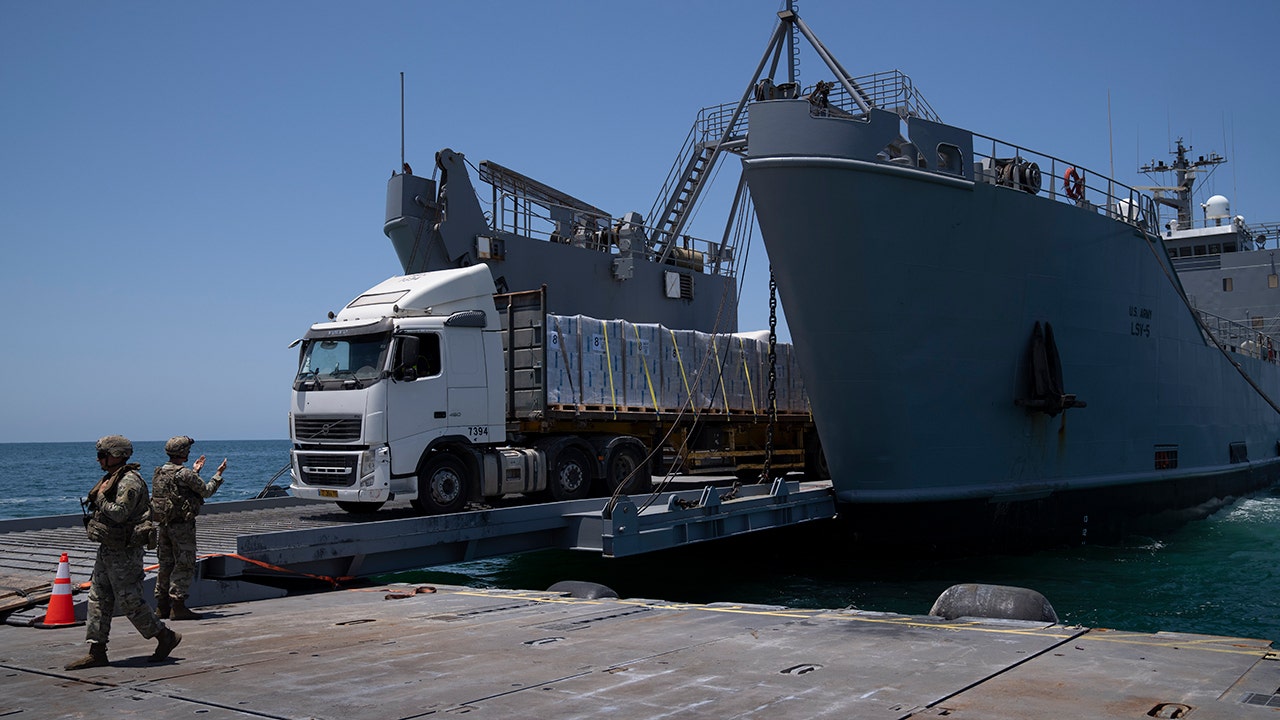
The pier built by the U.S. military to bring aid to Gaza has been removed due to weather to protect it, and the U.S. is considering not re-installing it unless the aid begins flowing out into the population again, U.S. officials said Friday.
While the military has helped deliver desperately needed food through the pier, the vast majority of it is still sitting in the adjacent storage yard and that area is almost full. Aid agencies have had difficulty moving the food to areas further into Gaza where it is most needed because the humanitarian convoys have come under attack.
EXCLUSIVE: ISRAEL TO BOOST FRESH WATER SUPPLY IN GAZA WITH PLANT UPGRADE AS UN WARNS IT MAY SUSPEND AID
The U.N., which has the widest reach in delivering aid to starving Palestinians, hasn’t been distributing food and other emergency supplies arriving through the pier since June 9. The pause came after the Israeli military used an area near the pier to fly out hostages after their rescue in a raid that killed more than 270 Palestinians, prompting a U.N. security review over concerns that aid workers’ safety and neutrality may have compromised.
A U.S. Army soldier gestures as trucks loaded with humanitarian aid arrive at the U.S.-built floating pier Trident before reaching the beach on the coast of the Gaza Strip, Tuesday, June 25, 2024. (AP Photo/Leo Correa)
U.N. World Food Program spokesman Steve Taravella said Friday that the U.N. participation in the pier project is still on pause pending resolution of the security concerns.
While always meant to be temporary and never touted as a complete solution to the problems getting humanitarian aid into Gaza, President Joe Biden’s $230 million project has faced a series of setbacks since aid first rolled ashore May 17 and has been criticized by relief groups and congressional Republicans as a costly distraction.
The pier has been used to get more than 19.4 million pounds, or 8.6 million kilograms, of food into Gaza, but has been stymied not only by aid pauses but unpredictable weather. Rough seas damaged the pier just days into its initial operations, forcing the military to remove it temporarily for repairs and then reinstall it. Heavy seas on Friday forced the military to remove it again and take it to the Israeli port at Ashdod.
Several U.S. officials, speaking on condition of anonymity to discuss military movements, said the military could reinstall the pier once the bad weather passes in the coming days, but the final decision on whether to reinstall it hasn’t been made.
Sabrina Singh, a Pentagon spokeswoman, acknowledged that she doesn’t know when the pier will be reinstalled. “When the commander decides that it is the right time to reinstall that pier, we’ll keep you updated on that.,” she said.
She also said Friday that there is a need for more aid to come into Cyprus and be transported to the pier. She noted that the secure area onshore is “pretty close to full,” but that the intention is still to get aid into Gaza by all means necessary. She said the U.S. is having discussions with the aid agencies about the distribution of the food.
CLICK TO GET THE FOX NEWS APP
But, she added, “Of course, if there’s not enough room in the marshalling yard, then it doesn’t make sense to put our men or women out there when there’s nothing to do.”
Palestinians are facing widespread hunger because fighting in the nearly nine-month Israel-Hamas war, Israeli restrictions on border crossings that are far more productive than the sea route and the attacks on the aid convoys have severely limited the flow of food, medicine and other supplies.
World
Meloni condemns antisemitism among ruling party's youth league
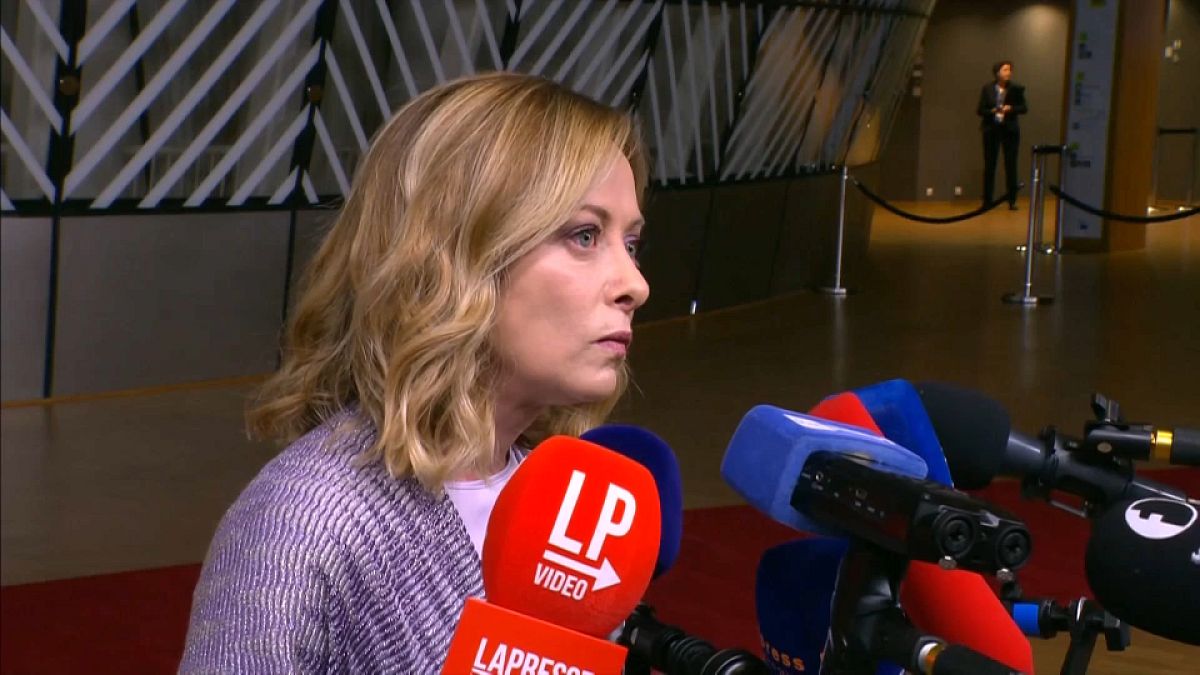
Left-wing news outlet Fanpage claimed it had video evidence of some National Youth members using racist slurs and making a Nazi salute.
Italy’s Prime Minister Giorgia Meloni has condemned racist and antisemitic remarks made by some members of the ruling Brothers of Italy party’s youth league.
Speaking to reporters in Brussels, Meloni said antisemitism and racism are incompatible with the party after two leading members of the National Youth resigned over alleged antisemtic remarks made against a Jewish Senator.
“I have said many times and repeat, I think that those who have racist, antisemitic or nostalgic feelings have simply got their home wrong, because these feelings are incompatible with the Brothers of Italy, they are incompatible with the Italian right, they are incompatible with the political line which we have clearly defined in recent years, and therefore I do not accept that there are ambiguities on this,” she said.
Meloni’s comments come after a report appeared in the left-wing online newspaper, Fanpage, which claimed it had video and audio recordings of some National Youth members using racist slurs and making Nazi salutes.
But Meloni also took a swipe at Fanpage’s reporting methods.
“I think that if we want to call it a journalistic investigation, the same attitude and the same investigation would be carried out in all the youth organisations of other political parties. We don’t know what could come out, we won’t know. You know why? Because in the history of the Italian Republic, what Fanpage did with Brothers of Italy is a first,” she said.
“It has never even been considered that they could infiltrate a political organisation, secretly record its meetings, also record the personal affairs of minors.”
The Fanpage investigation, entitled ‘Melonian Youth’, has sent shockwaves through the Brothers of Italy at the same time as Meloni has been seeking to cement a reputation as a moderate voice on the EU stage.
There has also been outrage from members of the Jewish Community of Rome, with some calling on Meloni to punish the youth wing members exposed in the investigation.
“The Jewish Community of Rome condemns the shameful images of racism and antisemitism that emerged from the Fanpage investigation,” president Victor Fadlun posted on X.
He’s urged the party to take “appropriate action,” saying it was “imperative that society” reacts against discrimination.
Brothers of Italy has its roots in the Italian Social Movement (MSI), formed in 1946 as a successor to Benito Mussolini’s fascist movement that ruled Italy for more than 20 years.
Meloni has repeatedly condemned the racist, anti-Jewish laws enacted by Mussolini in 1938 in a bid to turn her party into a mainstream conservative force.
But she has also ignored calls to declare herself “anti-fascist”, prompting some of her critics to say she has failed to fully distance herself from neo-fascism.
-

 News1 week ago
News1 week agoTracking a Single Day at the National Domestic Violence Hotline
-

 Fitness1 week ago
Fitness1 week agoWhat's the Least Amount of Exercise I Can Get Away With?
-

 News1 week ago
News1 week agoSupreme Court upholds law barring domestic abusers from owning guns in major Second Amendment ruling | CNN Politics
-

 Politics1 week ago
Politics1 week agoTrump classified docs judge to weigh alleged 'unlawful' appointment of Special Counsel Jack Smith
-

 Politics1 week ago
Politics1 week agoSupreme Court upholds federal gun ban for those under domestic violence restraining orders
-

 World5 days ago
World5 days agoIsrael accepts bilateral meeting with EU, but with conditions
-

 Politics1 week ago
Politics1 week agoTrump VP hopeful proves he can tap into billionaire GOP donors
-

 World1 week ago
World1 week agoInfluencers and politicians – meet the most connected lawmakers
